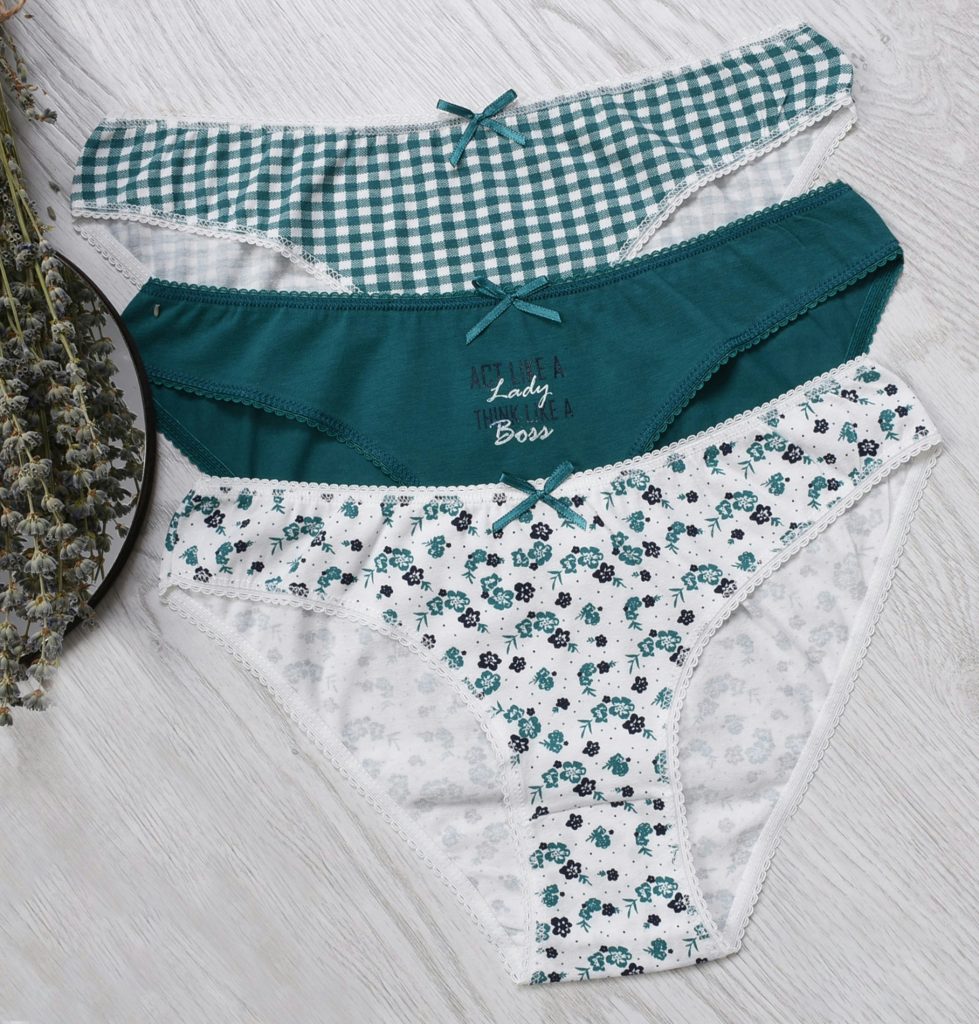By Tim Lambert
Early Panties
Roman women sometimes wore panties called subligaculum. However, after the fall of Rome, women did not usually wear panties until the end of the 18th century. Their only underwear was a long linen garment called a shift, which they wore under their dress. In modern times, women’s panties were invented again at the very end of the 18th century. (At first, they were called drawers). In the 19th century, panties came below the knee.
Today we still say a pair of panties. That is because in the early 19th century, women’s underwear consisted of two separate legs joined at the waist. They really were a ‘pair’. At first, panties were usually very plain, but in the late 19th century, they were sometimes decorated with lace and bands. In the 1860s, some women began to wear colored drawers, although white remained very common. In the 19th century, panties were usually made of cotton, though some women wore wool in the winter.
In the 19th century, panties were sometimes called bloomers. A woman named Elizabeth Miller invented loose trousers to be worn by women. After 1849, Amelia Bloomer promoted the idea, and they became known as bloomers after her. In time, underwear became known as bloomers. The word lingerie is derived from the French word for linen, lin. However, in the early 20th century, lingerie came to mean pretty underwear.
Modern Panties
From the early 20th century, women’s underwear began to be called panties rather than drawers. It’s believed the word panties is a feminine form of pants because women wore long underwear that looked like men’s pants. The word panties was first recorded in 1908. But it took time to become popular. Yet by the early 1930s, panties was the most common word for women’s underwear in the USA.
In Britain and Australia, panties are usually called knickers. Our word lingerie is derived from the French word for linen, lin. Lingerie was things made of linen.
At first, panties were tied in place with strings or sometimes held in place with buttons. Elastic was invented in 1820, but at first, it was used for gloves, stockings, and boots, not underwear. However, in the 1920s, panties were made with elastic.
In the 19th century, panties were usually open between the legs, but in the early 20th century, closed panties replaced them. In 1910, panties were made of rayon for the first time. From the mid-20th century, panties were also made of nylon. In the 19th century, panties came down to below the knee. In the 1920s, they became shorter. They ended above the knee. By the 1940s and 1950s, panties had become shorter still.
Meanwhile, in 1949, an American tennis player named Gertrude Moran or Gussie Moran (1923-2013) caused a sensation when she appeared at Wimbledon wearing frilly panties. She was known as Gorgeous Gussie, and it was very daring in 1949! Pantyhose was invented in 1959.
In the late 20th century, panties grew briefer. Thongs were introduced in the USA in 1981. They became popular in the 1990s. At the beginning of the 21st century, boy shorts became popular.
Edible panties went on sale in 1975. Today, the most popular color for panties is black.
Lastly, it’s not certain how the phrase ‘Don’t get your panties in a bunch’ started, but it seems to have started in several countries around the same time. The Australian phrase ‘Don’t get your knickers in a knot’ was used in the 1960s. The British phrase ‘Don’t get your knickers in a twist’ was first recorded in 1970. The American version ‘Don’t get your panties in a bunch’ was in use by 1972.
Lastly, 25 April is National Lingerie Day in the USA.

Tips for panties from Healthline.com
Last revised 2025